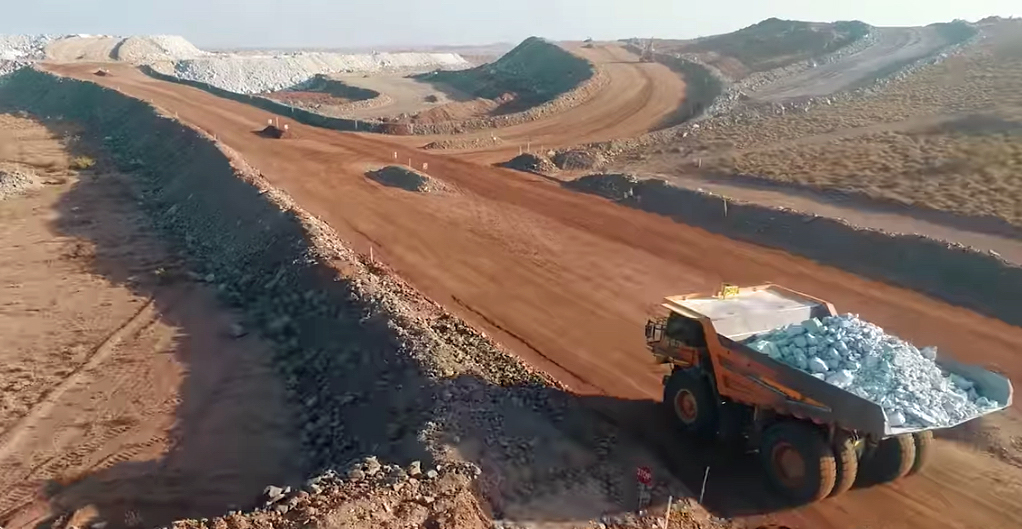WORKERS CAPITAL
Australia’s top pension boosts critical minerals to $8 billion
P3
Bloomberg News | May 15, 2024 |

Pilbara Minerals’ Pilgangoora lithium tantalum mine. Credit: Pilbara Minerals
AustralianSuper, the nation’s largest pension fund, has amassed a A$12 billion ($7.9 billion) critical minerals portfolio that it plans to increase in the next five years.

The A$335 billion fund is poised to “expand in that sector” with more investments in Australian companies, senior portfolio manager Luke Smith said in an interview Tuesday. That would build its already overweight position in lithium, vanadium, rare earths and other critical minerals vital for the energy transition.
“We will have out-sized investments in that space for the next five years-plus,” Smith said. “It’s absolutely still a great thematic to invest in, the energy transition.”
Smith was speaking before the federal government pledged later Tuesday to spend A$22.7 billion on its Future Made in Australia program. Industries involved in critical minerals, hydrogen and green metals will be among key beneficiaries.
Australia is among allies of the US seeking to break China’s dominance in producing and processing critical minerals that are becoming increasingly essential in the world’s bid to decarbonize. The measures are designed to stimulate high-end and green manufacturing, similar to President Joe Biden’s signature Inflation Reduction Act, or IRA.
AustralianSuper already holds double-digit stakes in copper and gold miner Sandfire Resources Ltd. and 29Metals Ltd., while it has built a 7% stake in Pilbara Minerals Ltd. Its suite of investments includes lithium, cobalt and graphite, while the fund also counts its copper holdings as among its critical-minerals assets.
In January, AustralianSuper said it would double its lithium exposure in the next five years, from about A$1 billion to between A$2.5 billion and A$3 billion.
Australia’s fast-growing A$3.7 trillion pension industry is hunting for investments domestically and abroad as the sector racks up A$2 billion of inflows each week.
More critical minerals companies are likely to be listed on Australia’s stock exchange, Smith said.
“There are opportunities across the various sectors,” he said. “Lithium: clearly there’s plenty.” The fund was also looking offshore for investments, with Smith adding there were some high-quality companies listed in London.
Like other large investors, Smith said the fund liked policy certainty.
“With policy certainty, you can get better investment and that’s a good thing for members,” he said, adding the IRA — enacted in 2022 and which offers tax credits on electric vehicles that are built with materials produced by free-trade partners such as Australia — was still in its early days. “We’re actually now starting to see action, which is great.”
(By Amy Bainbridge and Paul-Alain Hunt)
PUBLIC PENSIONS FUND PRIVATIZATION
Bloomberg News | May 15, 2024 |

Pilbara Minerals’ Pilgangoora lithium tantalum mine. Credit: Pilbara Minerals
AustralianSuper, the nation’s largest pension fund, has amassed a A$12 billion ($7.9 billion) critical minerals portfolio that it plans to increase in the next five years.

The A$335 billion fund is poised to “expand in that sector” with more investments in Australian companies, senior portfolio manager Luke Smith said in an interview Tuesday. That would build its already overweight position in lithium, vanadium, rare earths and other critical minerals vital for the energy transition.
“We will have out-sized investments in that space for the next five years-plus,” Smith said. “It’s absolutely still a great thematic to invest in, the energy transition.”
Smith was speaking before the federal government pledged later Tuesday to spend A$22.7 billion on its Future Made in Australia program. Industries involved in critical minerals, hydrogen and green metals will be among key beneficiaries.
Australia is among allies of the US seeking to break China’s dominance in producing and processing critical minerals that are becoming increasingly essential in the world’s bid to decarbonize. The measures are designed to stimulate high-end and green manufacturing, similar to President Joe Biden’s signature Inflation Reduction Act, or IRA.
AustralianSuper already holds double-digit stakes in copper and gold miner Sandfire Resources Ltd. and 29Metals Ltd., while it has built a 7% stake in Pilbara Minerals Ltd. Its suite of investments includes lithium, cobalt and graphite, while the fund also counts its copper holdings as among its critical-minerals assets.
In January, AustralianSuper said it would double its lithium exposure in the next five years, from about A$1 billion to between A$2.5 billion and A$3 billion.
Australia’s fast-growing A$3.7 trillion pension industry is hunting for investments domestically and abroad as the sector racks up A$2 billion of inflows each week.
More critical minerals companies are likely to be listed on Australia’s stock exchange, Smith said.
“There are opportunities across the various sectors,” he said. “Lithium: clearly there’s plenty.” The fund was also looking offshore for investments, with Smith adding there were some high-quality companies listed in London.
Like other large investors, Smith said the fund liked policy certainty.
“With policy certainty, you can get better investment and that’s a good thing for members,” he said, adding the IRA — enacted in 2022 and which offers tax credits on electric vehicles that are built with materials produced by free-trade partners such as Australia — was still in its early days. “We’re actually now starting to see action, which is great.”
(By Amy Bainbridge and Paul-Alain Hunt)
No comments:
Post a Comment